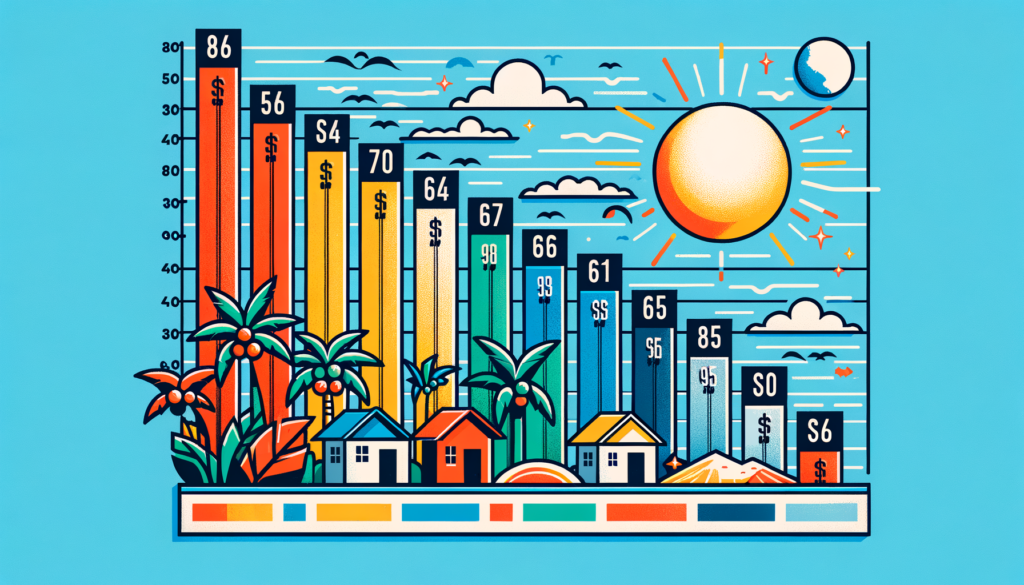Florida is a pivotal hub for marine enthusiasts and professionals with its extensive coastline and bustling maritime activities. Whether you’re a boat owner, a naval business operator, or an avid sailor, understanding marine insurance in Florida is essential for safeguarding your maritime investments and adventures. This article delves into the essentials of Florida’s marine insurance landscape. Then, we highlight the key benefits, explore potential challenges, and look at future industry trends. Let’s set sail on this informative journey!
Understanding Florida’s Marine Insurance Basics
Florida’s marine insurance market is as diverse as its waters. Mo, offering coverage for various vessels, from yachts and sailboats to commercial ships and fishing vessels. At its core, marine insurance in Florida is designed to protect boat owners from financial losses due to unforeseen circumstances such as accidents, theft, or weather-related damages. Policies typically encompass hull insurance, which covers the physical damage to the vessel, and liability insurance, which protects against claims from third parties. This dual coverage framework ensures that carriers comprehensively protect boat owners against many potential risks encountered on the water.
One of the fundamental aspects of marine insurance in Florida is its adaptation to the state’s unique maritime environment. Florida’s geographical location exposes it to hurricanes and tropical storms, making weather-related coverage a crucial component of any policy. Insurers often offer specialized options tailored for hurricane season, providing boat owners additional peace of mind. Understanding these policies’ nuanced terms and conditions is vital for ensuring that you have adequately covered yourself during these turbulent periods. Moreover, insurers may require specific precautions, such as relocating vessels to safer areas or securing them with additional moorings, further underscoring the importance of preparation.
Another critical element of Florida’s marine insurance is the emphasis on customization. Given the variety of vessels and usage scenarios, Florida insurers offer policies they can tailor to match the policyholder’s specific needs. Whether it’s adjusting coverage limits, adding optional endorsements, or including coverage for onboard equipment, this flexibility allows boat owners to build policies that align with their unique maritime profiles. This personalized approach is particularly beneficial for commercial operators with specialized needs based on their business operations.
Lastly, understanding the regulatory environment is crucial for navigating Florida’s marine insurance landscape. The state has specific requirements and guidelines that insurers and policyholders must adhere to, ensuring that coverage is adequate and compliant with legal standards. Regulations may dictate minimum liability coverage amounts or mandate specific safety measures, influencing the overall structure of marine insurance policies. Staying informed about these regulatory aspects can help boat owners make informed decisions and avoid potential pitfalls.
Critical Benefits of Florida Marine Insurance Policies
One of the most significant benefits of Florida marine insurance is its financial protection. The state’s waters are teeming with boating activities, leading to a higher likelihood of accidents, collisions, and other mishaps. Marine insurance provides a safety net, protecting boat owners from substantial out-of-pocket expenses arising from repairs, replacements, or legal liabilities. This financial safeguard is invaluable, mainly where marine activities are integral to daily life and business.
In addition to financial protection, marine insurance policies in Florida offer peace of mind. Knowing that you have covered your vessel against various potential risks allows boat owners to focus on enjoying their time on the water rather than worrying about possible hazards. This assurance extends beyond recreational boating to commercial operators who rely on their vessels for livelihood. Comprehensive coverage for these businesses ensures that operations can continue smoothly even in the face of unexpected disruptions.
Moreover, Florida marine insurance provides access to a network of resources and support. Many insurers offer policyholders additional benefits such as emergency towing, salvage assistance, and access to expert maritime advice. These added services enhance the overall value of the insurance policy, offering practical support that can be crucial during emergencies or challenging situations. Knowing that help is just a phone call away for boat owners can make a significant difference in managing maritime incidents efficiently and effectively.
Finally, marine insurance policies in Florida can be a crucial factor in complying with lender requirements. Lenders typically require comprehensive insurance coverage as a loan condition if you financed your vessel. An adequate marine insurance policy satisfies these requirements and ensures that the owner and the lender are financially protected. This alignment of interests creates a mutually beneficial scenario where all parties are vested in maintaining the vessel’s safety and value.
Navigating Potential Challenges in Coverage
Despite the numerous benefits, navigating the intricacies of marine insurance in Florida can present challenges, particularly in understanding the scope and limitations of coverage. One common issue is determining the appropriate level of coverage needed for a vessel. Factors such as the type of vessel, its value, and its usage can all influence the amount and type of coverage required. Boat owners must carefully assess their needs and work closely with insurers to ensure their policies adequately reflect their risk exposure.
Another challenge lies in the geographical and environmental risks specific to Florida. The state is prone to hurricanes and severe weather conditions, significantly impacting insurance premiums and coverage terms. Insurers may impose higher deductibles or exclude certain types of damage during hurricane season, making it crucial for policyholders to understand these stipulations thoroughly. Implementing storm readiness plans and utilizing hurricane-rated storage are preparation and planning that can help mitigate these challenges.
Claims processing can also be a point of contention for marine insurance policyholders. Filing and negotiating claims can be complex and time-consuming in the aftermath of a marine incident. Ensuring all documentation is in order and maintaining clear communication with insurers can help streamline this process. Additionally, understanding the claims procedure and knowing what to expect can alleviate frustrations and expedite resolutions, allowing quicker recovery from maritime mishaps.
Lastly, policyholders may face challenges related to evolving technological advancements and regulatory changes. As the maritime industry embraces new technologies, such as autonomous vessels and advanced navigation systems, insurance policies must adapt to cover these innovations adequately. Similarly, regulatory updates can alter coverage requirements, prompting policyholders to revise their policies. Staying informed and proactive about these changes is essential for maintaining comprehensive and relevant coverage.
Future Trends: Shaping a Brighter Maritime Horizon
Soon, several exciting trends will transform the landscape of marine insurance in Florida, promising a brighter maritime horizon. One of the most significant developments is integrating technology into insurance practices. Insurers increasingly leverage data analytics, telematics, and IoT devices to enhance risk assessment and provide personalized insurance solutions. This trend allows for more accurate premium calculations and tailored coverage options, benefiting insurers and policyholders.
Sustainability is another trend gaining traction in the marine insurance sector. With growing awareness of environmental impact, insurers are beginning to offer incentives and discounts for eco-friendly practices, such as adopting fuel-efficient engines or utilizing sustainable materials in vessel construction. This emphasis on sustainability aligns with broader global efforts to protect marine ecosystems, making it a win-win for both the environment and the insured parties.
Additionally, regulators set regulatory changes and international collaborations to play a pivotal role in shaping the future of marine insurance. As maritime laws evolve and global partnerships strengthen, insurers and policyholders in Florida can expect more standardized and comprehensive coverage options. These changes aim to streamline cross-border operations and ensure consistent protection for vessels navigating international waters, ultimately fostering a more cohesive and secure maritime industry.
Finally, the rising popularity of alternative insurance models, such as peer-to-peer insurance and usage-based coverage, is poised to revolutionize the marine insurance market. These models offer greater flexibility and cost-effectiveness, appealing to a new generation of boat owners seeking customizable and affordable insurance solutions. As these trends continue to unfold, Florida Insurance Quotes predicts that Florida’s marine insurance landscape will become more dynamic, inclusive, and responsive to the needs of its diverse maritime community.
Conclusion
In conclusion, Florida’s marine insurance landscape is as vibrant and dynamic as its maritime community. With a deep understanding of the basics, numerous benefits, and potential challenges, boat owners and on-water businesses can confidently navigate these waters. The future of marine insurance in Florida looks promising, with technological advancements, sustainability initiatives, and innovative insurance models paving the way for enhanced coverage and protection. As we sail into this exciting future, one thing is clear: with the right marine insurance, smooth sailing is ahead for Florida’s maritime enthusiasts and professionals.

